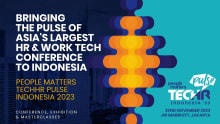Building the ultimate people analytics platform

Is it absurd that in the age of artificial intelligence, metaverse and crypto, the news that brings me childlike giddy excitement is the launch of a revamped people analytics platform? Despite all our talk about HR ushering in the future of work and redefining careers, that lack of people analytics platforms that match data interfaces from other parts of the business is dismal. People are complicated and privacy rules exist; yet even with these constraints, there lies a gap between what can be achieved and what has been.
Remember the days when every HR conference was talking about predictive analytics? Five years later (or more), we are still figuring out how to get our basics right. I’ve been a fan of Gary Munro’s water principles since I first read them in 2020, and when I heard about Spotify launching Disco v2.0, my excitement knew no bounds. Thus, in celebration of Disco’s revamp, let’s talk through the four stages every people analytics platform must go through before it hits nirvana.
Stage 1: Building foundations
Every great data platform begins by building strong foundations. Much like constructing a tall building, the foundation determines how high the people analytics platform will fly, the number of attacks it can sustain and how well the platform will age. The water principles go a long way in helping ensure that the foundations are strong. Yet, they aren’t exhaustive. Here are three others to consider at this stage (if not more):
Feedback is not only appreciated but encouraged & incorporated. Feedback cannot be left to best intentions. While you don’t have to start with a great product, you do need to establish clear mechanisms of how feedback will flow in and be incorporated. Not all feedback has to be incorporated right away; some can be filed as bugs by design and some for later improvements; but irrespective of which file the feedback is slotted into, it must be sought via a sustainable channel.
Time is precious and will continue to be saved. The first version will always be time and effort intensive. As Katarina Berg says - Measure activities and find embedded expertise to optimise, diversify, and standardiae data collection. Baseline the time spent on People Analytics data, map the networks of the people involved to be more efficient with fewer person-hours to improve the process. The optimisation should never stop until it takes almost zero effort for continuous refresh of data. If countless other organisational data platforms can do it, so can we.
We measure ourselves. You will never know if you are heading in the right direction if you don’t measure it. Do not forget to build analytics for the people analytics tool. Measure data accuracy, time taken to generate metrics and the usage statistics. Even if you begin with just three success measures, you are off to a great start. You can always add more as the platform progresses.
The good news is that with the right principles in place, unlike actual building construction, one can keep reinforcing the concrete. Organisations naturally spend a while dabbling with stage 1 before moving to stage 2.
Stage 2: The front-end
Once the foundations are in place, it is time to grow taller and add the next floor. At this stage, there are two critical questions an organisation must answer: (1) who is the user base and (2) how nifty should the front end be?
The end user is usually restricted for two main reasons (a) data privacy: the fear of landing on the wrong side of the law and ethics and (b) lack of trust that users will make the right decisions with the data. Regrettably, both lead to data not being used efficiently.
Long before the fads of empathy and kindness, we witnessed radical transparency trending. Unfortunately, it remained just that - a fad that disappeared as others came along. Yet, when it comes to people analytics, organisations need to do just that – expand access to data to those who will use it vs keeping it bottled up within the HR community.
Gary Munro says it best when he writes - My interpretation of radical transparency is how we share our experience in order to raise the bar for everyone, so that we can continue to drive innovation together.
Data should be accessible to all. As an employee, I should have access to the data the organisation holds about me. As a leader, I should have access to team data and not depend on HR partners to provide them and as an HR partner, I should not be running pillar to post to fetch required numbers.
Once we have defined the end users, the next question is that of the interface. If you aren’t yet tired of the continuous Gary Munro and Spotify references, let me re-iterate the fourth water principle: Packaging matters: Never underestimate the importance of how you package the outputs of your data processes, both in terms of accessibility and presentation.
In addition to the water principles, Munro has a few front-end principles too:
Humans are creatures of convenience. If something is difficult to find or navigate, we give up quickly. How many times do you go onto the second page of a search engine result?
We eat with our eyes. We often decide whether something is good or not by how it looks. Create a visual layer that does your content justice.
Good enough isn’t enough. Prioritise excellence in all aspects of the team’s output. Reputation matters for trusted content.
Radical transparency along with an accessible front-end application ensures organisations successfully glide through stage 2.
Stage 3: Insights
Once organisations have jumped through the barriers that Stage 2 offers, they’re now ready to build a skyscraper. Apart from skipping through hoops to fetch it and it being presented in unappealing formats, there are two other reasons data isn’t used well. It’s because they (1) don’t come with the right comparators and (2) don’t answer the question of ‘so what’? I am guilty of this too. Every now and then I find myself in meetings presenting innumerable graphs and numbers as leaders scratch their heads wondering why they’re looking at these.
If regretted attrition is flat lining at 14%, is that good? Should I be doing something about it? What other metrics are impacting attrition? When job satisfaction falls to an all-time low, did something happen at the organisational level that threw it off the cliff? Numbers just for the sake of numbers are as useless as a glass hammer.
Fortunately, stage 3 deals with just that – transforming numbers into insights.
Here are two easy principles to start with:
No numbers without context. Each metric must come with suitable comparators indicating clearly if it is good (green), bad (red) or needs attention (amber).
Do more than just share news, share insights. Don’t stop with indicating if a number is good or bad. Back it up with insights as to what might be impacting these numbers and recommendations on how to keep up the good work or make it better.
Stage 4: Ultimate insights
Now that we’ve covered the first three stages, let’s talk about the ideal state. Imagine a world where every time a metric goes wrong, alarm bells would ring and the platform would highlight where the fault is along with recommendations on how to fix it. While I haven’t come across a people analytics platform that does that yet, in the age of ChatGPT, artificial intelligence and machine learning, it isn’t hard to imagine; especially since similar systems exist in the world of cloud computing (to name one).
Increasingly, data is being used to validate assumptions and usher change. As HR continues to evolve, now at a faster rate than ever before, I have no doubt that we’ll hit stage 4 soon. Until then, I’d be happy landing at Stage 3. What about you? Have you come across people analytics platforms that have left you impressed? If yes, let me know!















